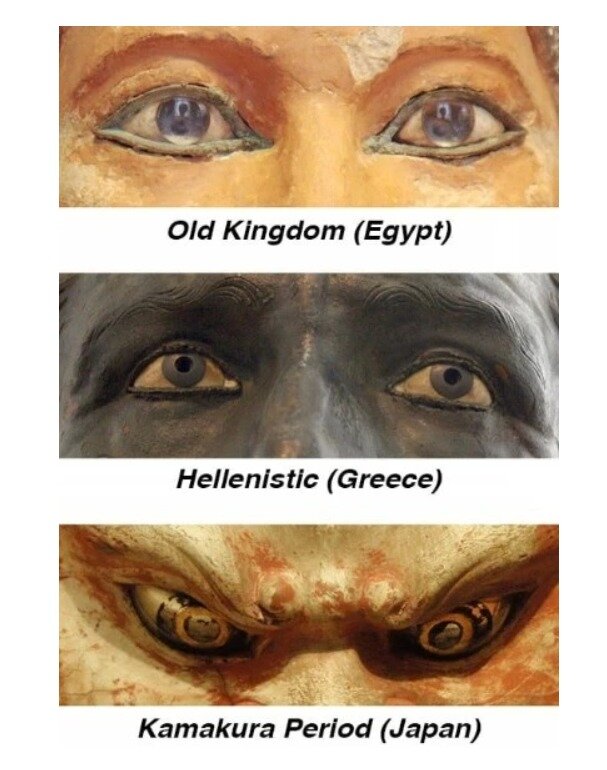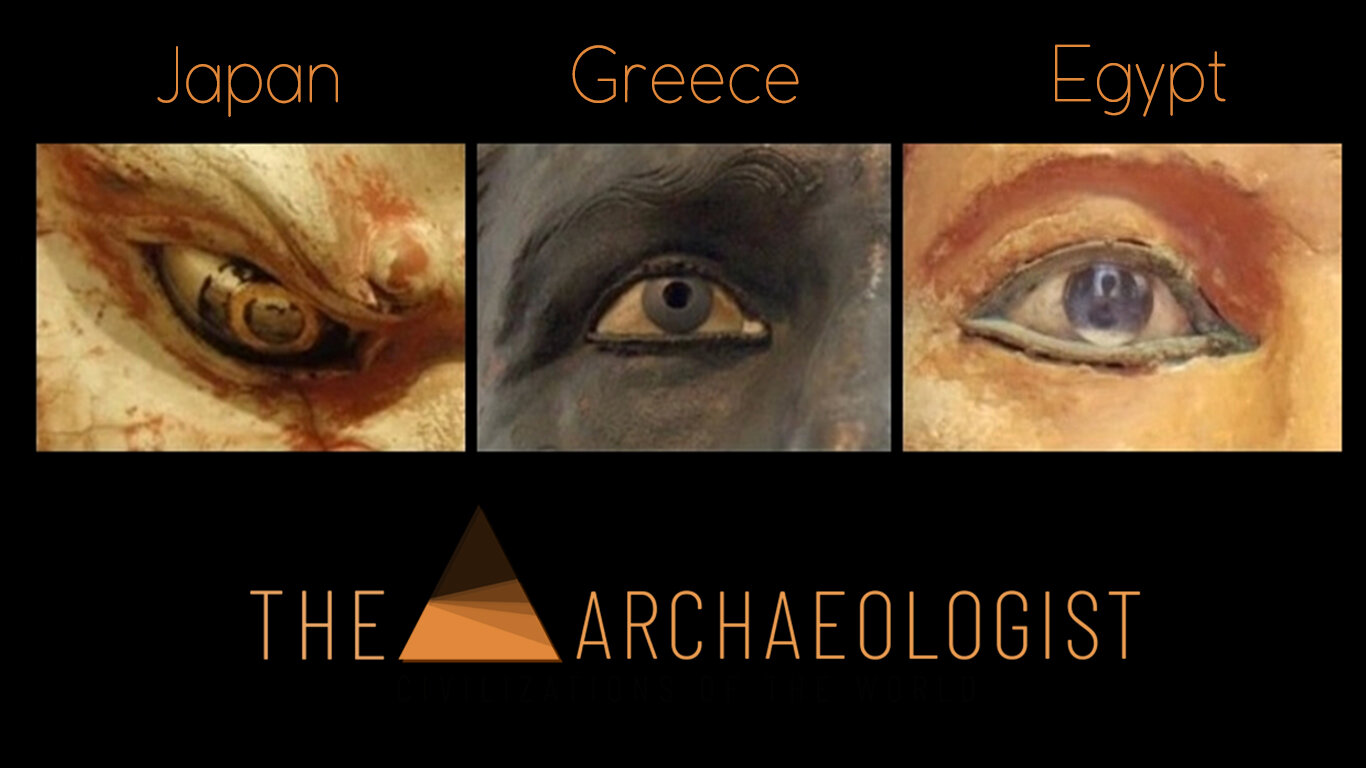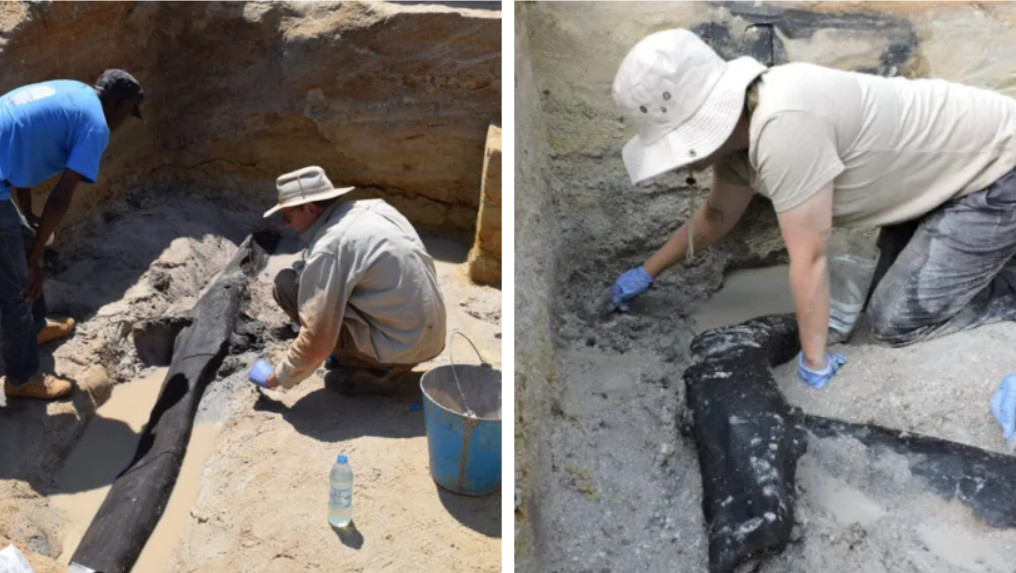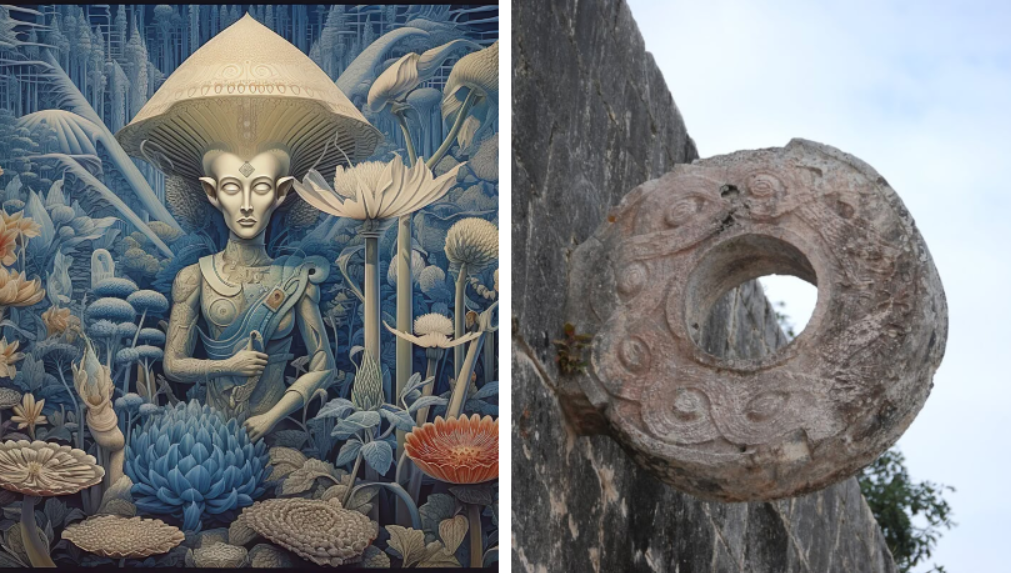Ιnlaid eyes are found in sculpture in many periods, from ancient times till Middle Ages. The history behind these wonderful innovations is great and dates back centuries.
Historically, several cultures have come up with some very ingenious solutions for how to bring more life to the eyes of their sculptures. Ancient Greeks would assemble eyes from copper, glass and/or shell, and anchor them from the inside of a hollow bronze head. Ancient Greek bronzesmiths had a variety of techniques at their disposal to enhance the appearance of their creations. Due to their often fragmentary state of preservation, the modern observer tends to think of early Greek bronzes as monochromatic, but it is clear that the practice of inlaying other materials into bronze started early in ancient Greece.
Inlays appear in a broad variety of bronze object types from weapons and armor to vessels and jewelry to relief-decorated objects and figural sculpture. Many of the finest early Greek bronzes were embellished with inlays that enlivened the sculptural forms and may have added symbolic or even magical qualities. Eyes were often given particular prominence with inlays. Of special interest is a new technical analysis of a Late Geometric statuette of a man and a centaur (Metropolitan Museum of Art, inv. 17.190.2072) in which the eyes of the man were inlaid with silver to contrast with the eyes of the centaur, which appear to have an iron-rich inlay. Although the evidence is frequently incomplete, it is clear that a wide variety of colorful inlays such as gold, silver, iron, bone, ivory, and amber were utilized, and other materials, such as stone and shell, were certainly used as well.
Another great sculpture with eyes tha magnetize everyone who looks at them is Iniochos (Charioteer of Delphi). It has its own room in the museum of Delphi, and a quick glance is not enough to see it. You have to look at it closely from all sides and admire the multitude of details on its body and its bronze tunic. The eyes of Iniochos look alive, and perhaps no other statue gives this unique feeling. White enamel was used for the eyeballs to make them look exactly like a natural human eye. For the iris, brown semi-precious stone was used, while the pupils of the eyes are black. The eyelashes were made of small copper wires, while its lips were made of thin reddish copper plates.
Detail of the Iniochos statue's head, showing the inlaid eyes.
The Egyptians combined materials of alabaster, rock crystal & copper, and inserted them from the outside of the face to bring vitality to their sculptures and busts. There are early examples of Egyptian statues in which the inlaid eyes are either blue or grey in colour. Some epictions of deities such as Horus showed them with eyes that had a blue pupil. A range of materials are known to have been used depending on the desired effect and perhaps the situation, location and purpose for which the eye, and its artifact, were created to represent. Those eyes, for example, include the use of materials such as limestone, quartz, rock crystal, obsidian, bone and ivory, copper alloys, resin, plaster, animal glue and pigments. What is surprising is the recognition of what exquisite craft skill and technology are implied by the use of such crystal for the eyes of these statues.
Ancient Egyptian inlaid eye: (top) view of the eye from below; (bottom) x-radiograph of the eye from the same position, showing some of the technical features.
The sculpture of the Seated Scribe or Squatting Scribe is one of these famous works of ancient Egyptian art. It represents a figure of a seated scribe at work. The sculpture was discovered at Saqqara and dated to the period of the Old Kingdom, from either the 5th Dynasty, c. 2450–2325 BCE or the 4th Dynasty, 2620–2500 BCE. It is now in the Louvre Museum in Paris. It is a painted limestone statue, the eyes inlaid with rock crystal, magnesite (magnesium carbonate), copper-arsenic alloy, and nipples made of wood.
Detail of inlaid eye belonging to the "Seated Scribe”.
The Chinese would position small obsidian beads in the center of the eyes, (a technique which was sometimes also seen in Japan during the Asuka and Nara periods (combined 538-974). In the late Heian period (974-1185), however, a new process for infusing a startlingly realistic quality into the eyes of sculpture elevated Japanese Buddhist statuary to new heights.
In the early periods of Japanese art history, eyes were simply carved into the wood (and then painted). This way of depicting a sculpted eye is called chougan (彫眼), and examples of this can be seen in many temples throughout Japan. However, when visiting a temple with carvings that have crystal eyes, it is impossible to ignore the intimacy of the statuary’s pensive gaze or piercing glare. This style of eye-crafting is called gyokugan (玉眼).
Left: Twenty-Eight Attendants (Basu Sennin) Sanjusangendo. Right: photo by David Bilbrey, Sculptor and Art History hound.
In 1151, an Amida Triad in the Chougakuji was the first in Japan to employ gyokugan. The technology behind this craft can simply and casually be described as an eyeball sandwich. The būshi of the Chougakuji’s Amida group carved rock crystal into a lens, painted the inside with a pupil & iris, backed it with paper, and then inserted it into an uchiguri (hollowed-out) head. The result was revolutionary. Made more famous by the Kei school about 30 years later, this technique became the sculpting standard which further set Japanese butsuzo apart from what was happening with the rest of the world.














